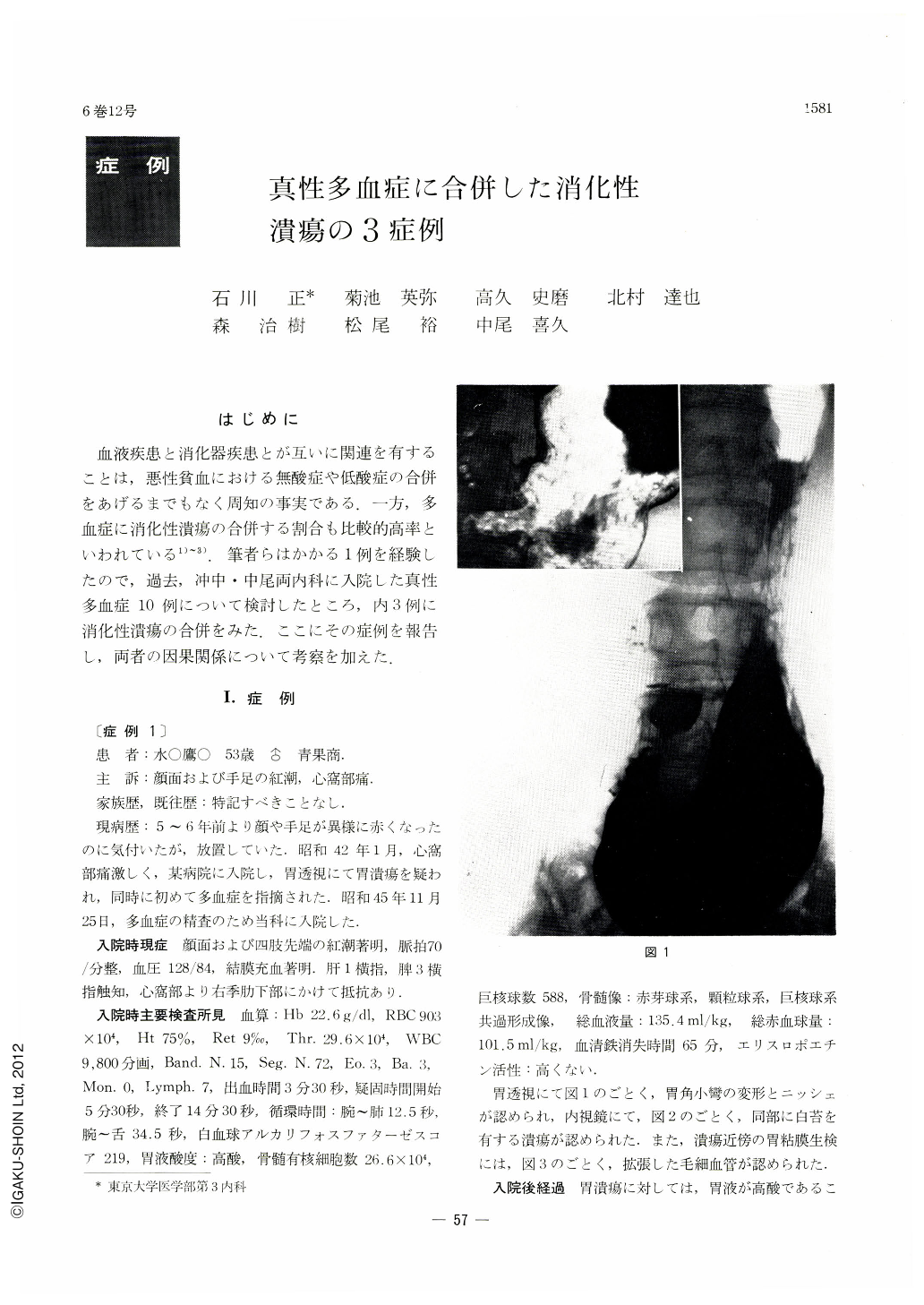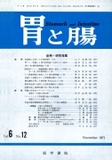Japanese
English
- 有料閲覧
- Abstract 文献概要
- 1ページ目 Look Inside
はじめに
血液疾患と消化器疾患とが互いに関連を有することは,悪性貧血における無酸症や低酸症の合併をあげるまでもなく周知の事実である.一方,多血症に消化性潰瘍の合併する割合も比較的高率といわれている1)~3).筆者らはかかる1例を経験したので,過去,沖中・中尾両内科に入院した真性多血症10例について検討したところ,内3例に消化性潰瘍の合併をみた.ここにその症例を報告し,両者の因果関係について考察を加えた.
In 1905 Weber and Watson first mentioned that polycythemia vera was often associated with pepticulcer. Thereafter many theories have been advanced to explain the increased incidence of these two diseases.
In three of ten cases of polycythemia vera in our Okinaka-Nakao clinic, peptic ulcers were fonnd roentgenographically. These three cases contained two gastric ulcers and one duodenal ulcer. In all cases polycythemia vera was found earlier than peptic ulcer and all cases were treated with anti-cancer drugs and anti-ulcer drugs. The incidence of polycythemia vera and peptie ulcer was about 5% except 23% of videbaek.
In 1920 Bing mentioned that both peptic ulcer and polycythemia vera were caused by gastric hypersecretion.
In 1939, Reznikoff described that constant or frequent bleeding from the ulcer caused the unnatural stimulation of the bone-marron so that eventually the bone marrow continued to overact.
In 1933, Morris reported that polycythemia vera was caused by over-production of Castle's intrinsic factor by the stomach or increased susceptibility of the marrow to stimulation by this factor.
On the other band, in 1934, Boyd stated that such vascular changes as thrombosis of the duodenal vessels were probably diretly related to the high incidence of peptic ulcer in polycythemia vera.
At present, it is difficult to clarify the direct relationship between the two diseases, but it may be reasonable to assume that both vascular changes by polycythemia vera and gastric hypersecretion cause peptic ulcer.

Copyright © 1971, Igaku-Shoin Ltd. All rights reserved.


